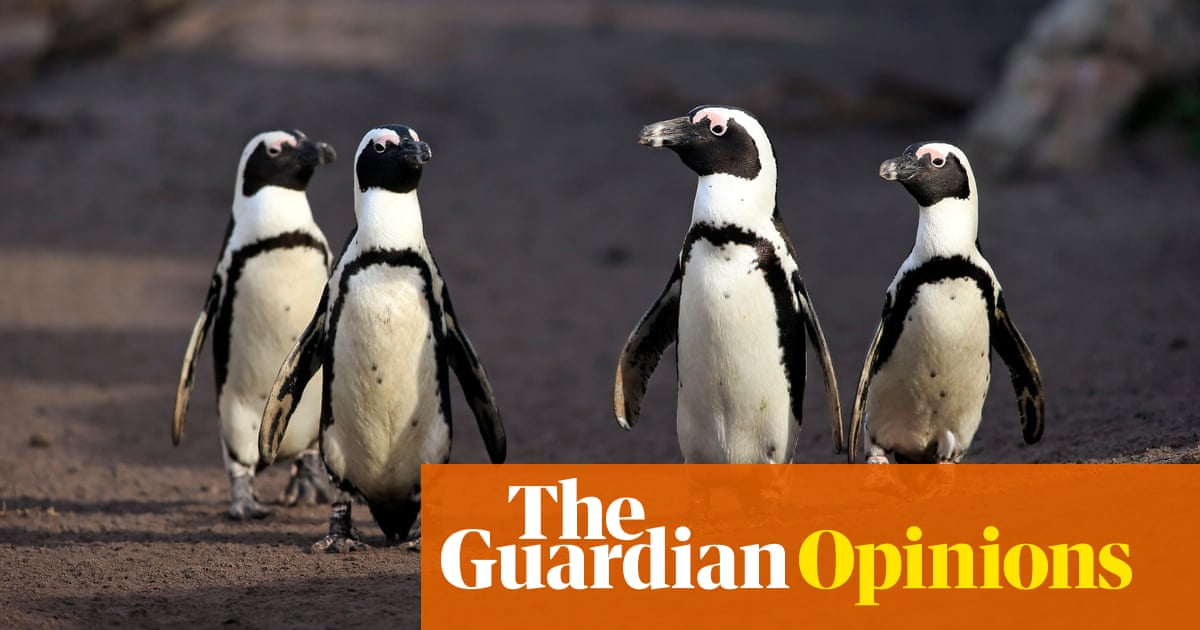One of my most annoying traits, I have been told, is my tendency to puncture others’ casual enjoyment of nature with brutal and unsolicited pieces of trivia. Chalk it up to the influence of my hobbyist herpetologist father, who instilled in me not only a passion for less cuddly animals but also a rigorous attention to the facts.
If your favourite animals are sea otters, which mate for life and hold hands so they don’t drift apart? I will inform you that they also sometimes rape baby seals to death. Oh, you prefer chimps? Have you seen that David Attenborough footage of a group of them hunting a monkey that was apparently too disturbing to broadcast with close-up detail?
It’s not that I don’t appreciate cute animals, or set out to spoil everyone’s fun. But since I was a child, the steady pleasure and interest I’ve drawn from nature has been inseparable from its complex and occasionally shocking whole. That’s at the stem of our fascination with animals, after all: all the ways in which they’re different, and the ways in which we are sometimes the same.
I was not at all surprised by the recent findings in PLOS One that same-sex sexual behaviour in animals is widely observed but historically under-reported. The analysis, led by anthropologists at the University of Toronto, concluded that 77% of researchers working across 52 different species had observed homosexual activity, but only 19% had published on it.
It’s not that same-sex animal pairings haven’t been documented: sexual activity between male penguins was observed by members of the Scott Antarctic expedition in 1911, but was left off the official report for fear of causing scandal.
Conversely, modern-day gay penguins have gained icon status, such as Silo and Roy of Central Park zoo in New York, and London zoo’s Ronnie and Reggie. But that, too, reflects their status as outliers, oddities and even emblems for a cause. (In 2019, London zoo erected a banner in Ronnie and Reggie’s enclosure: “Some penguins are gay. Get over it.”)
Both the exclusion, and the embrace, equally reflect human judgments on animal behaviour – as abnormal and shocking, or marginalised identities in need of our allyship or defence. By all accounts, Ronnie and Reggie’s stablemates aren’t bothered.
Even the prevalence of penguins in the limited literature of gay animals seems telling, penguins being personable and non-threatening. But as the PLOS One study makes clear, it’s not only the species we find charming that defy our expectations. Where is the representation for gay mole rats? The Pride flag for same-sex-attracted mongooses?
The straightforward answer is that those species are not so commonly kept in captivity, and so less subjected to scrutiny of their sex lives. But that neglects to account for the human judgments, curation and selection that shape our view on the natural world.
“Same-sex sexual behaviour is widespread and natural in the animal kingdom,” said the lead author of the study. The fact it has not been treated as such, including by scientists, is a testament to our hang-ups and also, more broadly, the limitations of our methods. To some extent, what gets studied is what we set out to prove; we see what we choose to look for.
It’s long been taken as fact, for example, that male mammals are larger than females. But an analysis last year of more than 400 species revealed that only about 44% had larger males, reflecting a “huge taxonomic bias”. You can see parallels between that and the stubborn belief in essential differences between men and women, even though science increasingly shows there is as much variation within them as between them.
Many of these biases are ingrained over centuries, and take yet more time to investigate and correct. A large-scale 2021 study comparing men and women’s brains found only slight differences, attributable to brain size: once individuals’ head sizes had been taken into account, sex differences were “tiny and inconsistent”. The failure to engage with these scientific findings has flow-on effects for how our society is structured, and blinds us to opportunities for change.
For non-human life, overwhelmingly suffering as a result of our activity, our piecemeal attention and care isn’t just driving many species to extinction; efforts to protect them are also carried out on our terms. So-called “charismatic species” – those such as elephants and pandas, more readily seen as deserving our attention and resources – are still used as tent poles for conservation efforts, even as the habitats they depend on continue to diminish.
And in our failure to relate meaningfully to animals, and see them as they are, it’s not just them who are being done a disservice. This human-centric view overstates our importance and tightens our grip on constructs and narratives (that men are bigger, or that same-sex couples are abnormal) where they may have no basis in nature.
That’s not to say that we should give into the naturalistic fallacy: it’s just as senseless for us to seek direct inspiration from penguins or pandas as it is for us to project our personal struggles and morals on to them. But by aspiring to see animals clearly, we may gain clarity on ourselves and our place on the planet we all share.
Our often selective and self-serving engagement with nature blinds us to those subtler lessons that would be advantageous for us to learn. For example: how animal groups are structured for mutual survival, the importance of ecosystems and the part every species plays in maintaining that balance.
Ultimately – as the ecologist Julia Monk said about the study – it speaks to the limits of “our own social imaginations”, and the lengths to which we go to protect ourselves from being disillusioned.

